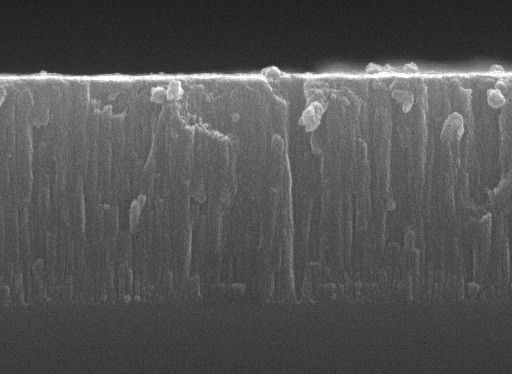
30 Dec, 2020
2020
Author: Ali Kosari Mehr
hardening and anti-corrosive effects
Having considered the influence of heat treatment processes on the improvement in mechanical properties and anti-corrosion performance of steel in the previous article, now, one can compare the effectiveness of these processes with that of thin-film processes; accordingly, a point-by-point comparison is offered below:
- By means of thin-film processes, not only does the nature of the material – steel here – not alter, but also mechanical properties and anti-corrosion performance of material can considerably improve. For instance, steel can be brittle after being subjected to heat treatment processes, resulting in it easily fracturing under stress. Nonetheless, a hard/anti-corrosion film deposited on the surface of steel can enhance the performance of the steel without changing its nature [1, 2].
- Using a hard/anti-corrosion film, one can boost the properties of diverse materials, including steel; however, heat treatment processes can only improve the properties in certain types of materials. For example, carburization is generally utilized to enhance the properties of steel or iron; notwithstanding, a hard/anti-corrosion coating can improve the properties of other materials such as aluminum and glass [3].
- In a case in which the changes made to the nature of steel – or other materials – do not result in the steel not having any practical applications, still, a hard/anti-corrosion coating can further enhance its properties.
- Mainly, thin-film processes can much greater improve the anti-corrosion performance compared to heat treatment processes; i.e., around a hundredfold increase for thin-film processes and about a tenfold increase for heat treatment processes.
- In the best-case scenarios, heat treatment processes can increase the hardness of steel by about 800%; however, thin films can increase the hardness by about 2000% [4, 5].
References:
- Kosari Mehr A, Zamani Meymian MR, Kosari Mehr A (2018) Nanoindentation and nanoscratch studies of submicron nanostructured Ti/TiCrN bilayer films deposited by RF-DC co-sputtering method. Ceram Int 44:21825–21834. Webpage
- Ezazi MA, Quazi MM, Zalnezhad E, Sarhan AAD (2014) Enhancing the tribo-mechanical properties of aerospace AL7075-T6 by magnetron-sputtered Ti/TiN, Cr/CrN & TiCr/TiCrN thin film ceramic coatings. Ceram Int 40:15603–15615. Webpage
- Chopra KL, Kaur I (1983) Thin Film Technology: An Introduction. In: Thin Film Device Applications. Springer US. Webpage
- Ou YX, Lin J, Tong S, et al (2016) Structure, adhesion and corrosion behavior of CrN/TiN superlattice coatings deposited by the combined deep oscillation magnetron sputtering and pulsed dc magnetron sputtering. Surf Coatings Technol 293:21–27. Webpage
- Wasa K, Kitabatake M, Adachi H (2004) Thin Films Material Technology: Sputtering of Compound Materials. Springer. Webpage
Categories
Recent Posts
-
 20 Aug, 2022What is Auger electron spectroscopy?
20 Aug, 2022What is Auger electron spectroscopy? -
 13 Jul, 2022Classification of vacuum pumps
13 Jul, 2022Classification of vacuum pumps
